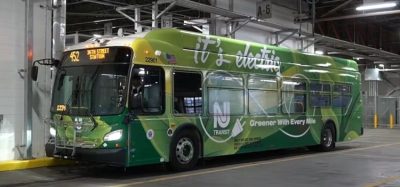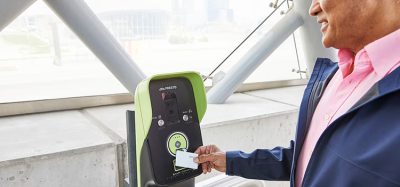From cross-border ticketing to cross-border MaaS
- Like
- Digg
- Del
- Tumblr
- VKontakte
- Buffer
- Love This
- Odnoklassniki
- Meneame
- Blogger
- Amazon
- Yahoo Mail
- Gmail
- AOL
- Newsvine
- HackerNews
- Evernote
- MySpace
- Mail.ru
- Viadeo
- Line
- Comments
- Yummly
- SMS
- Viber
- Telegram
- Subscribe
- Skype
- Facebook Messenger
- Kakao
- LiveJournal
- Yammer
- Edgar
- Fintel
- Mix
- Instapaper
- Copy Link
Posted: 6 June 2020 | Dominik Elsmann - Aachener Verkehrsverbund (AVV) GmbH | No comments yet
Dominik Elsmann, Head of Department for Cross-border Public Transport at Aachener Verkehrsverbund (AVV) GmbH – the transport authority for the Aachen City region and the Düren and Heinsberg districts in Germany – gives an update on how AVV is progressing in developing an efficient cross-border ticketing system, and how this could lead to cross-border MaaS.
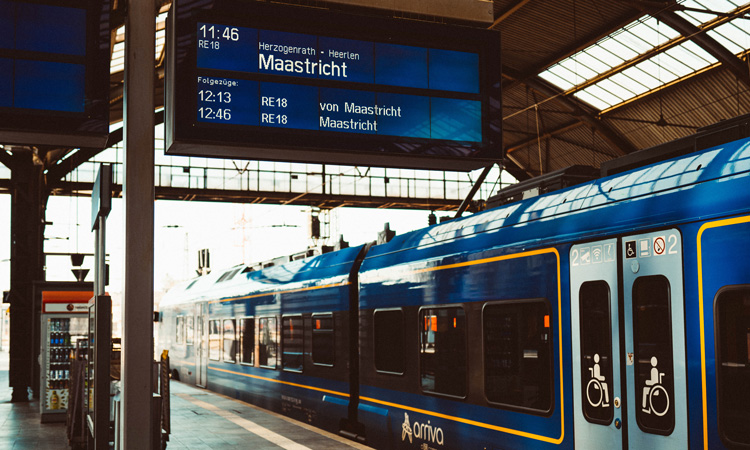

The authority in Limburg has started a pilot by tendering for a cross-border MaaS system for the region
The test user feedback was really valuable in determining our next steps; users told us that the interoperable card was helpful in making their lives easier for travelling across the border with public transport, but they also explained what kind of improvements they would like to see. Near the top of the list of questions was why a chip card was still needed when using a smartphone would be more convenient. It’s a very valid argument, so we’re taking it seriously to rectify it.
What has Aachener Verkehrsverbund (AVV) been doing in order to develop an inclusive, efficient and profitable cross-border ticketing system?
My department at AVV focuses mainly on ID ticketing, or as it’s now more commonly known, account-based ticketing (ABT).
We have been testing an account-based ticketing approach here in the cross-border region between the German and Dutch sides. We’ve tested it on cross-border bus lines and had more than 500 test users who tested the whole system together with us in daily operation and provided us with feedback on it. We found that having an account-based ticketing scheme first and foremost benefits the user – which of course is the most important thing.
We provided the test users with chip cards on the German and Dutch sides so that they could travel across the border with only one chip card. In reality, there are different systems in use between Germany and the Netherlands, so these users would usually have to travel using two different chip card systems, based on different technical standards. We tried to bridge those standards by adding an interoperable layer – that is what we tested within the ABT approach.
The authority in Limburg has started a pilot by tendering for a cross-border MaaS system for the region
The test user feedback was really valuable in determining our next steps; users told us that the interoperable card was helpful in making their lives easier for travelling across the border with public transport, but they also explained what kind of improvements they would like to see. Near the top of the list of questions was why a chip card was still needed when using a smartphone would be more convenient. It’s a very valid argument, so we’re taking it seriously to rectify it.
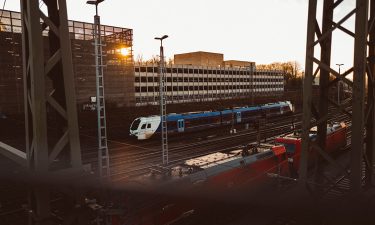

Based on the feedback and these areas for improvement, we put a proposal together with our partners on the German and Dutch sides of the border to further develop the ABT approach. That proposal has now been approved. At the end of January 2020, we received approval from the federal state North Rhine-Westphalia that they will fund us for this activity. They are very interested in our previous work and achievements, and would like see to it developed further – potentially into a working solution that could be rolled out over the whole of North Rhine-Westphalia. It’s a very ambitious objective, but also a positive step in the right direction.
Can this kind of project assist in making cross-border MaaS a reality?
The Dutch side of our border is very active in the field of MaaS. They are currently running seven pilots that have been initiated by the Dutch Ministry for Transport. One is taking place in Limburg, the region that borders Aachen; Limburg is another location that is heavily affected by cross‑border public transport. It directly faces a border to Belgium, to Flanders and also to Wallonia, as well as into Germany. It is like a small island between Germany and Belgium, so there’s a real need to find working solutions for cross‑border public transport and mobility services.
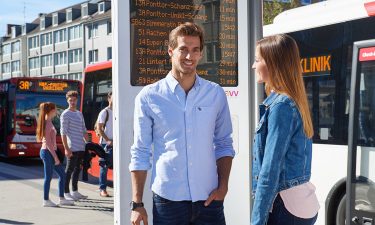

Arriva is the current public transport operator in the province of Limburg, running bus and train services; now, having won the tender for the pilot, they also act as a MaaS provider in Limburg. Having seen what AVV has been doing across the German border in terms of ABT, Arriva’s taking into account what has been achieved so far and contributes to the objectives of a new ABT project: easyConnect. We tried to synchronise the activities of both projects right from the start. We see MaaS as the continuation of ID ticketing on the Dutch side, and easyConnect as the continuation of the efforts made so far on the German side. This approach proved a very successful way to find support on both the Dutch and the German sides, and to bring it together and develop the system further.
We are no longer testing with the interoperable chip cards I mentioned earlier, but trying to make the smartphone the user device. That means that we need to work together on an interoperable barcode that is used and displayed on smartphones, and can be inspected by the different validation devices in use across both the German and Dutch borders.
We would like to not only test this on cross‑border bus services, but also on a cross‑border train service between Aachen and Maastricht – a very important cross-border connection for the region. We would also like to include more mobility options in the future, making the whole system as flexible as it can be so that it can accommodate further services like car-sharing or bike-sharing.
Ticketing is one of the main challenges in mobility generally, but I believe that public transport ticketing is the biggest challenge within that
We would like to test a distance-based tariff on the German side of the border to make sure that we have a connecting solution to the existing distance-based tariff on the Dutch side. From our point of view, it would make life easier if there were distance-based tariffs on both sides of the border to make sure that we can easily connect them. We would then have to decide how to treat the basic fare; it might be that there’s an entry amount for the vehicle, but afterwards there is a second component which bases the price on the number of kilometres travelled, and the combination of both is a distance-based tariff.
If we were to follow this approach on the German and the Dutch side, we could see a lot of potential to make cross-border tariffs between the two countries much simpler, and make it even more transparent for the passenger.
Now that we have approval to proceed, we are currently trying to set up the consortium by preparing detailed work packages and trying to organise a project plan that helps us to realise and implement what we have on our to-do list.
We are planning to go into discussions with our partners and into detailed development works on a very tight timeline. I think that is what’s required in a situation like this; an ambitious timeline to make us act now.
Do you think it has been beneficial to both Aachen and Limburg to have worked on a cross-border basis previously now that you’re embarking on this joint project?
Yes – it has not always been like this, but the cross-border collaboration between the German and Dutch sides has increased heavily within the last five or six years. It has helped that there is a very supportive political background on both the German and on Dutch sides of the border and that cross-border collaboration is one of the priorities on those political agendas.
We have a very good collaboration with our Dutch colleagues, aided by the fact that we are aiming towards the same objectives: making progress in ticketing, tariffs and the enhancement of cross-border connections.
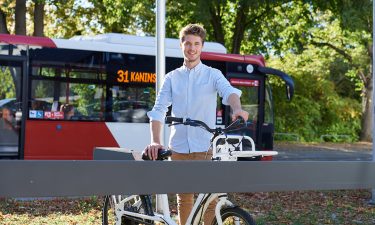

Another helpful contributing factor is the Benelux collaboration between Luxembourg, the Netherlands and Belgium, which North Rhine‑Westphalia is also contributing to. Those four partners are trying to move in the same direction in terms of cross-border access, which makes all the effort that we are putting in more impactful on a larger scale.
Ticketing is one of the main challenges in mobility generally, but I believe that public transport ticketing is the biggest challenge within that. Ticketing and payments for new mobility service providers is way more flexible than in public transport because this sector always tries to take security issues into consideration, making sure that an e-ticket cannot be copied, for example. From my point of view, the key to success is to bridge public transport and mobility services because, so far, mobility service providers seem a lot more able to fit public transport into their schemes.
I don’t think any MaaS system that excludes public transport can succeed because it is essentially the core of the whole shared transport system – everything else is an add-on.
Biography
Dominik Elsmann is Head of Department for Cross-border Public Transport at Aachener Verkehrsverbund. He has a PhD in Economic Geography from RWTH Aachen University and worked as a project manager for international transport projects for three years. He joined AVV in 2015, where he is responsible for all matters in the field of cross-border public transport and has been a project manager for several international public transport projects that focus on innovation and digitalisation.
Related topics
Infrastructure & Urban Planning, Journey Planning, Mobility Services, Multimodality, Sustainable Urban Transport, Ticketing & Payments
Issue
Issue 2 2020
Related cities
Europe
Related organisations
Aachener Verkehrsverbund (AVV) GmbH





